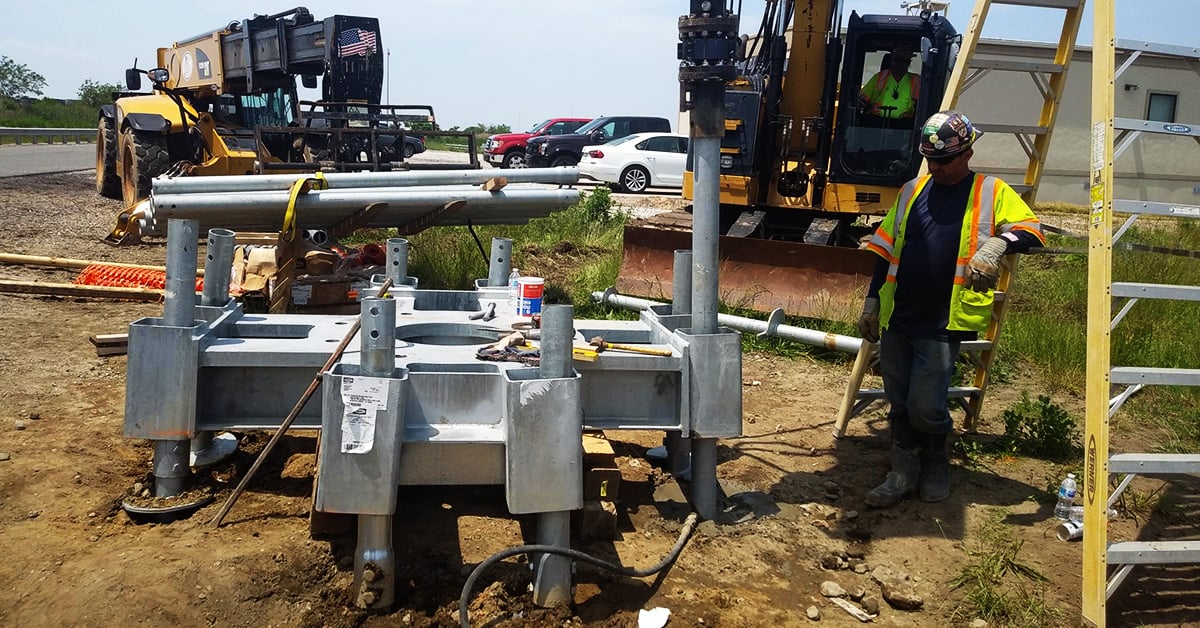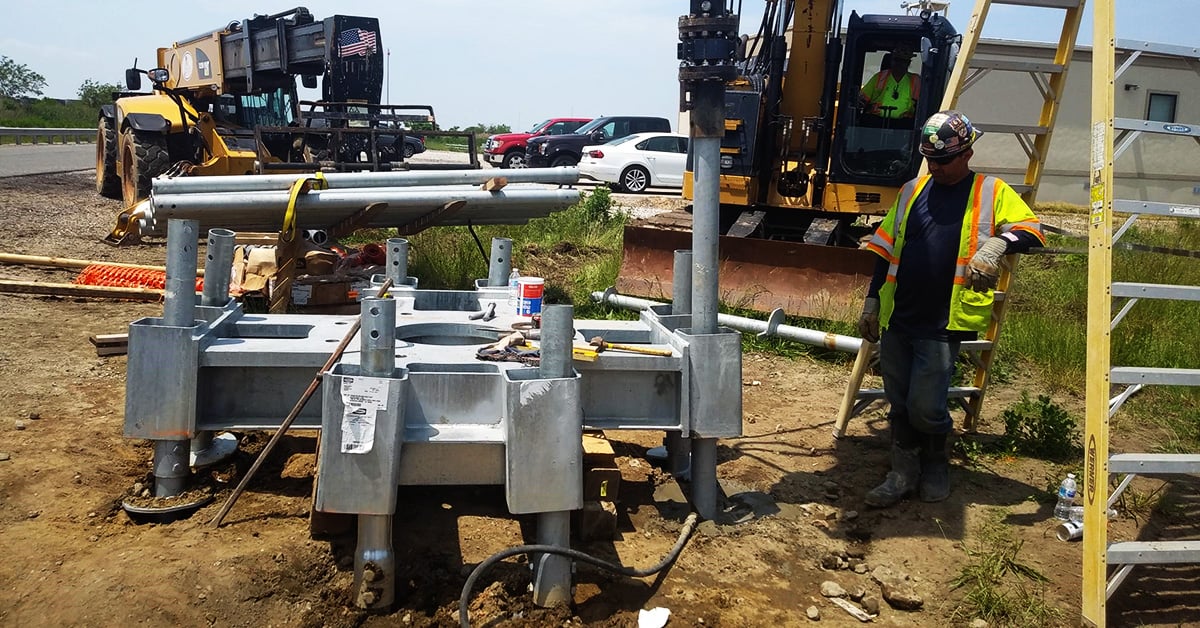Helical piles have become a common piling system in the North American construction market. They are used for many applications with low to moderate tension and compression loads. Slender helical piles, less than 4.5 inches in diameter, have historically been used for light shear loads of 1 to 5 kips in vertical applications. This method derives the lateral capacity as a function of the pile’s allowable structural bending moment and the allowable passive earth pressure of the soil. It is common to analyze the capacity of the piles by theoretical slender pile equations, P-Y curves, or software programs that model P-Y response. An adequate safety factor or a service limit on the allowable deflection is applied to the allowable loads to determine an applicable pipe size. In recent years larger piles, with diameter greater than 5.5 inches, have been used for larger lateral loads. Large diameter piles have been designed for loads in excess of 20 kips.

Since smaller diameter helical piles are typically more efficient and cost effective than large diameter piles, it is also common to batter groups of slender helical piles to achieve larger shear and moment capacities. A typical batter angle from vertical installation is between 5 and 20 degrees. A pile group of 3 to 4 slender helical piles connected via a steel grillage or concrete cap can support shear loads of 10 to 20 kips. Larger pile groups can be designed to support larger shear and moment loads. Battered pile groups transfer a substantial amount of the shear load via the axial tension and compression capacity of the helical pile. This greatly reduces the amount of passive pressure applied to the soil and the structural bending capacity required of the pile. A common misconception is that the axial capacity of the piles will take all shear load. To make this assumption the pile group must be static and not translating. In application the pile group is not static and will transfer load both axially and passively along the helical shaft. It is critical to analyze the structural component of a battered pile group and choose a helical anchor with adequate structural bending capacity. Battered piles are most efficient in a fixed head situation and provide a stiffer pile head response than vertically installed piles.
The use of both vertical and battered helical pile groups are a cost-efficient piling system for use in light to moderate shear load applications when the geotechnical and structural capacities are sized appropriately.

